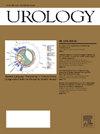Applying a Process Improvement Approach to Optimize Operating Room Turnover in Urology
IF 2
3区 医学
Q2 UROLOGY & NEPHROLOGY
引用次数: 0
Abstract
Objective
To apply a process improvement approach to optimizing operating room (OR) turnover time at an ambulatory surgery center.
Methods
Turnover was defined as the time a patient leaves the OR to the time the room is ready to receive the next patient. This process was observed multiple times to define the steps and operators involved. Each step was timed and meticulously studied to identify opportunities for improvement. New times for each step were obtained. The projected impact on the system capacity and potential financial implications were calculated using $1 per second as the “rent” of an OR.
Results
The OR turnover baseline time ranged from 31:45 to 42:49 minutes:seconds. Four opportunities for improvement were identified and proposed: 1) calling housekeeping earlier so they can be ready to enter the OR as the patient is being rolled out, 2) mopping the floor starting from the side of the OR where the back table is located to allow back table preparation to proceed without delay, 3) performing as much set up in the attached annex room as possible, and 4) rolling the next patient in as the scrub technician is scrubbing in and completing last minute organization. The theoretical financial benefits resulting from the implementation of these process improvements were calculated to be $1559 per turnover, with an annual saving of $2,025,000 per individual OR.
Conclusion
By applying process improvement techniques, the authors uncovered a multitude of opportunities to improve the OR turnover process, which, if optimized, could generate significant financial benefit.
应用流程改进方法优化泌尿外科手术室周转率。
目的采用流程改进方法优化门诊手术中心手术室(OR)的周转时间:方法:周转时间是指从病人离开手术室到手术室准备好接收下一位病人的时间。对这一过程进行了多次观察,以确定相关步骤和操作人员。对每个步骤进行计时并仔细研究,以确定改进的机会。每个步骤都获得了新的时间。以每秒 1 美元作为手术室的 "租金",计算了对系统容量的预期影响和潜在的财务影响:手术室周转基线时间从 31:45 到 42:49 分秒不等。确定并提出了四个改进机会:1)提早通知内务人员,以便他们在病人被推出手术室时做好进入手术室的准备 2)从手术室后台所在的一侧开始拖地,以便后台的准备工作能及时进行 3)尽可能多地在附属房间进行准备工作 4)在擦洗技师擦洗病人并完成最后一分钟的整理工作时,将下一位病人推出手术室。据计算,实施这些流程改进带来的理论经济效益为每个营业额 1,559 美元,每个手术室每年可节省 2,025,000 美元:通过应用流程改进技术,作者发现了许多改进手术室周转流程的机会,如果对其进行优化,可以产生巨大的经济效益。
本文章由计算机程序翻译,如有差异,请以英文原文为准。
求助全文
约1分钟内获得全文
求助全文
来源期刊

Urology
医学-泌尿学与肾脏学
CiteScore
3.30
自引率
9.50%
发文量
716
审稿时长
59 days
期刊介绍:
Urology is a monthly, peer–reviewed journal primarily for urologists, residents, interns, nephrologists, and other specialists interested in urology
The mission of Urology®, the "Gold Journal," is to provide practical, timely, and relevant clinical and basic science information to physicians and researchers practicing the art of urology worldwide. Urology® publishes original articles relating to adult and pediatric clinical urology as well as to clinical and basic science research. Topics in Urology® include pediatrics, surgical oncology, radiology, pathology, erectile dysfunction, infertility, incontinence, transplantation, endourology, andrology, female urology, reconstructive surgery, and medical oncology, as well as relevant basic science issues. Special features include rapid communication of important timely issues, surgeon''s workshops, interesting case reports, surgical techniques, clinical and basic science review articles, guest editorials, letters to the editor, book reviews, and historical articles in urology.
 求助内容:
求助内容: 应助结果提醒方式:
应助结果提醒方式:


